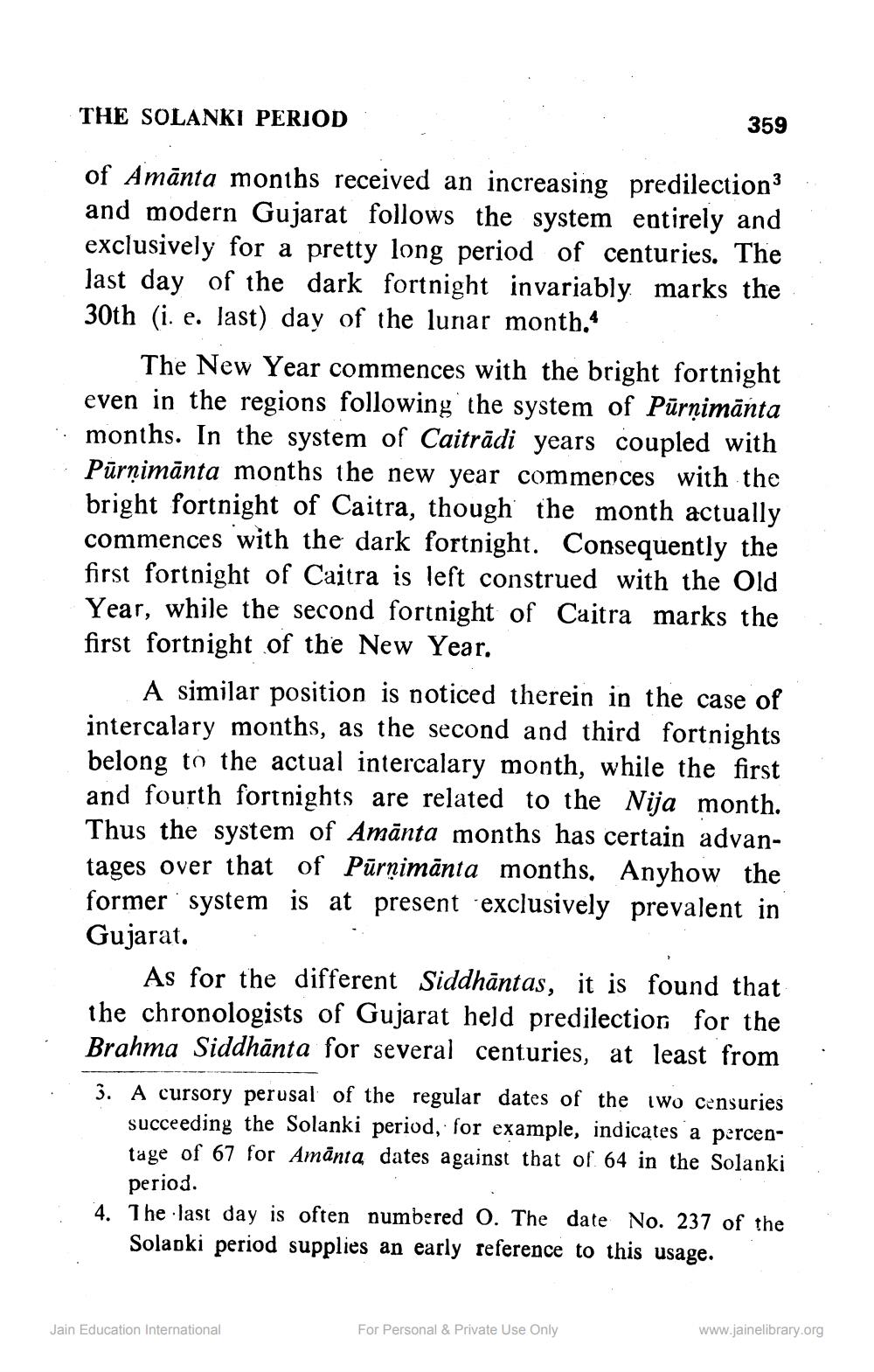________________
THE SOLANKI PERIOD
359
of Amānta months received an increasing predilection 3 and modern Gujarat follows the system entirely and exclusively for a pretty long period of centuries. The last day of the dark fortnight invariably marks the 30th (i. e. last) day of the lunar montb.
The New Year commences with the bright fortnight even in the regions following the system of Pūrņimānta months. In the system of Caitrādi years coupled with Pūrņimānta months the new year commences with the bright fortnight of Caitra, though the month actually commences with the dark fortnight. Consequently the first fortnight of Caitra is left construed with the Old Year, while the second fortnight of Caitra marks the first fortnight of the New Year.
A similar position is noticed therein in the case of intercalary months, as the second and third fortnights belong to the actual intercalary month, while the first and fourth fortnights are related to the Nija month. Thus the system of Amānta months has certain advantages over that of Pūrạimānta months. Anyhow the former system is at present 'exclusively prevalent in Gujarat.
As for the different Siddhāntas, it is found that the chronologists of Gujarat held predilection for the Brahma Siddhānta for several centuries, at least from 3. A cursory perusal of the regular dates of the two censuries
succeeding the Solanki period, for example, indicates a percentage of 67 for Amānta dates against that of 64 in the Solanki
period. 4. The last day is often numbered 0. The date No. 237 of the
Solapki period supplies an early reference to this usage.
.
For Personal & Private Use Only
Jain Education International
www.jainelibrary.org




